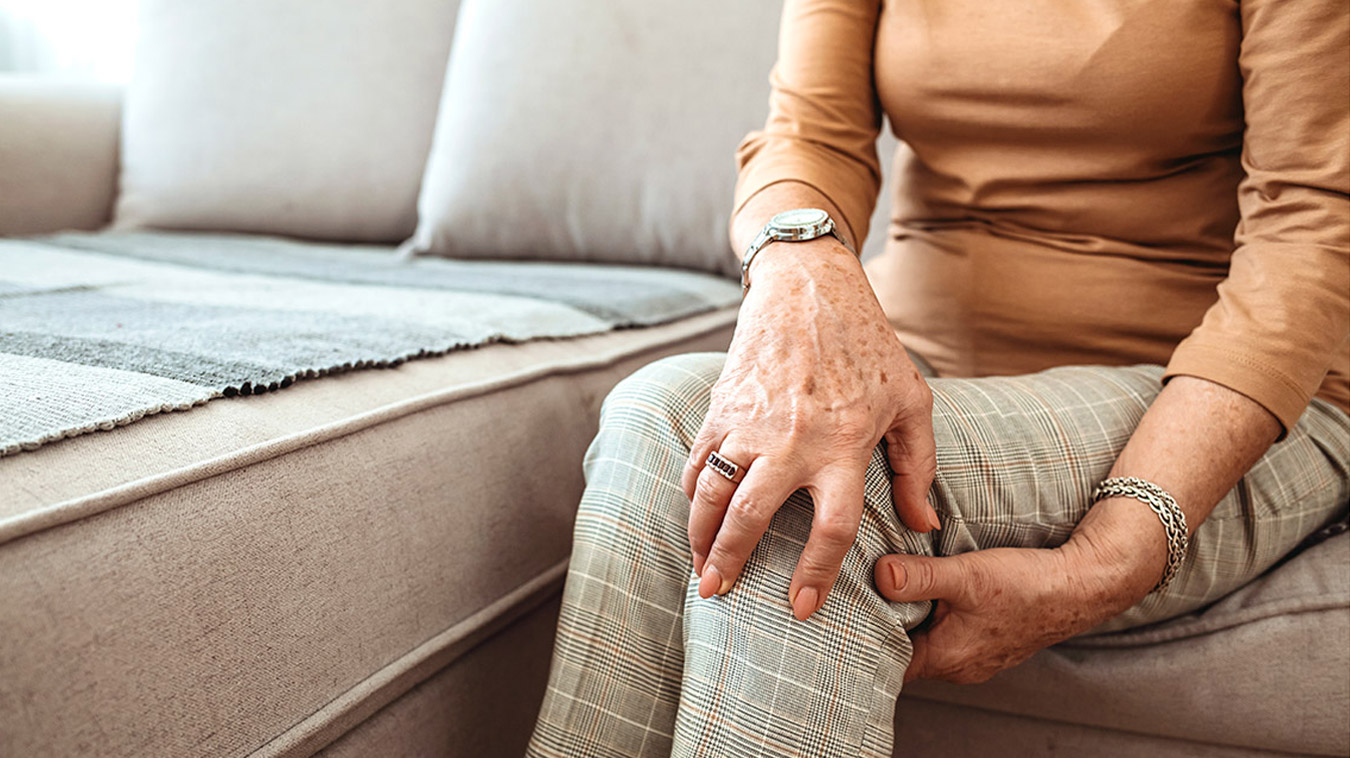
Home WHY DOES ARTHRITIS AFFECT MORE WOMEN THAN MEN?
Over six million Canadians are living with arthritis. It’s a painful disease that affects the quality of life for people of all ages, sexes, and races, but women seem to be harder hit than men. According to the Arthritis Society, 60% of Canadians living with arthritis are women.
While more research is needed to better understand this issue, studies have shown that there are a number of physiological factors that are connected to the disparity of the disease between sexes.
One of such factors is the autoimmune connection. Many forms of arthritis are due to an autoimmune disease which for a variety of other reasons affect more women than men.
For example, rheumatoid arthritis is an autoimmune and inflammatory disease that affects women two to three times more than men. Lupus, although not a form of arthritis itself, is another autoimmune disease where arthritis is one of the most common symptoms, and studies show that nine out of 10 people living with lupus are women.
Another factor are hormones. Many women develop osteoarthritis (OA) after menopause and some researchers theorize that it’s because of the drop in estrogen levels. It’s also suggested that because menopause can cause weight gain, it puts more strain on your joints, which poses a greater risk for developing arthritis.
Knee mechanics have also been studied. This theory looks at the connection between the physical makeup of a woman’s knee, the occurrence of knee injuries involving the anterior cruciate ligament (ACL), and OA. It suggests that because of the physical makeup of a women’s knee, they are more prone to ACL injuries, and thus at a greater risk for developing OA later in life.
Genetics may also play a role. Studies show that the risk of women with a common type of OA that affects their knees, hips, and hands is greater if they have female relatives who also have it.
So, what can you do to mitigate your risk? While there’s no clear-cut answer as to why more women are affected by arthritis than men, it’s important to be aware of the risk factors. If you have concerns, your best course of action is to talk with your health care practitioner.
To diagnose arthritis, your health care practitioner will consider your symptoms, medical and family history, and the results of a physical examination. Lab tests and medical imaging, such as X-ray, ultrasound, bone scan, or magnetic resonance imaging (MRI), may also be requested to determine whether arthritis is present and ascertain the type. You may be referred to a rheumatologist to help manage some types of arthritis.
Common symptoms to watch for include:
Treatments often include a variety of options depending on the type of arthritis, such as diet and exercise recommendations, bracing, over-the-counter medication, nonsteriodal anti-inflammatory drugs (NSAIDs), etc.
Pain management procedures may also be a treatment option. These procedures use image guidance to precisely target an area of concern, which treat symptoms by injecting medication through a small needle:
Studies suggest treatment in early stages of the disease is the most effective way to slow disease progression. In most cases, you can manage mild to moderate arthritis symptoms for many years with a simple treatment plan. It’s also important to thoroughly discuss all your options with your health care practitioner, especially in the later stages of the disease.
For more information about pain management procedures, please speak to your health care practitioner.
REFERENCES
The Arthritis Society (2019) “Women and Arthritis”. www.arthritis.ca. Accessed February 8, 2021.
Centers for Disease Control and Prevention (2020) “Rheumatoid Arthritis”. www.cdc.gov. Accessed February 8, 2021.
Kon, E., et al. (2018) “Clinical Outcomes of Knee Osteoarthritis Treated With an Autologous Protein Solution Injection: A 1-Year Pilot Double-Blinded Randomized Controlled Trial.” American Journal of Sports Medicine. Jan; 46(1):171-180. Accessed February 8, 2021.
Lupus Foundation of America (2021) “How lupus differs from arthritis.” www.lupus.org. Accessed February 8, 2021.
In the spirit of reconciliation, we acknowledge that Mayfair Diagnostics operates on Treaty 7, Treaty 6, and Treaty 4 traditional territories and Métis ancestral lands.
© 2024 Mayfair. All rights reserved.
| Cookie | Duration | Description |
|---|---|---|
| cookielawinfo-checkbox-analytics | 11 months | This cookie is set by GDPR Cookie Consent plugin. The cookie is used to store the user consent for the cookies in the category "Analytics". |
| cookielawinfo-checkbox-functional | 11 months | The cookie is set by GDPR cookie consent to record the user consent for the cookies in the category "Functional". |
| cookielawinfo-checkbox-necessary | 11 months | This cookie is set by GDPR Cookie Consent plugin. The cookies is used to store the user consent for the cookies in the category "Necessary". |
| cookielawinfo-checkbox-others | 11 months | This cookie is set by GDPR Cookie Consent plugin. The cookie is used to store the user consent for the cookies in the category "Other. |
| cookielawinfo-checkbox-performance | 11 months | This cookie is set by GDPR Cookie Consent plugin. The cookie is used to store the user consent for the cookies in the category "Performance". |
| viewed_cookie_policy | 11 months | The cookie is set by the GDPR Cookie Consent plugin and is used to store whether or not user has consented to the use of cookies. It does not store any personal data. |